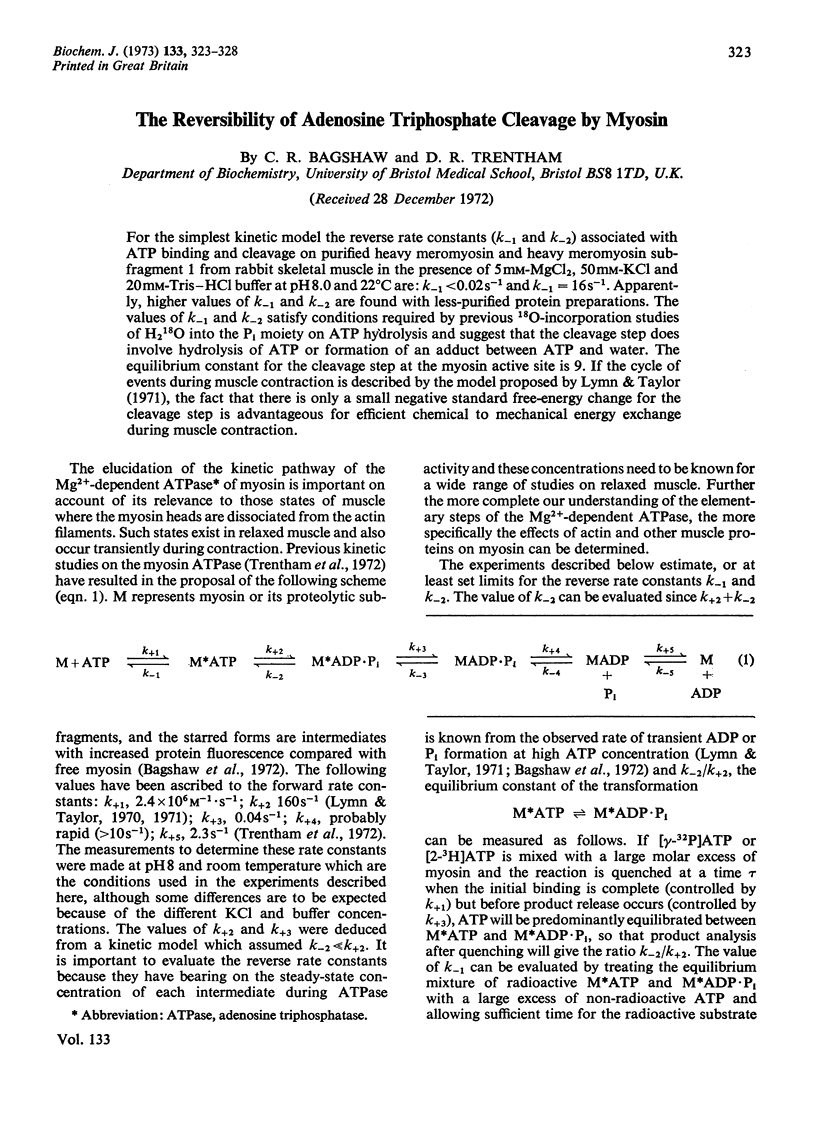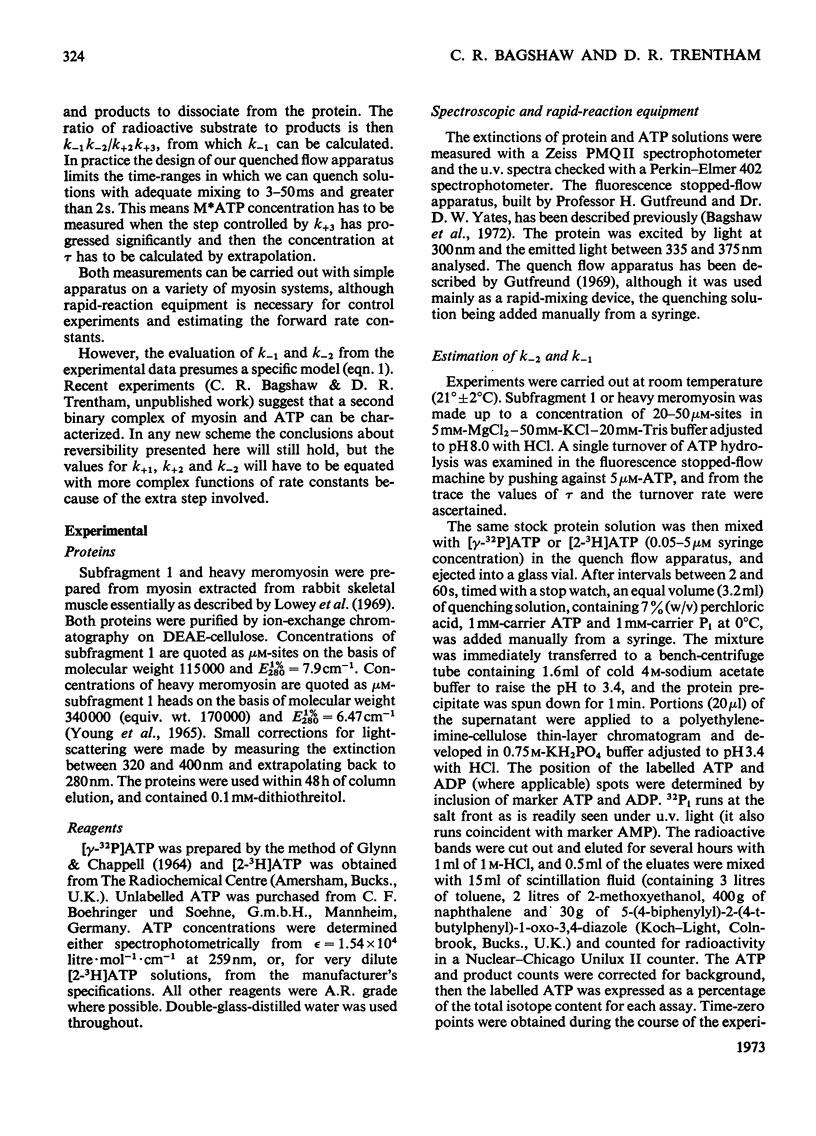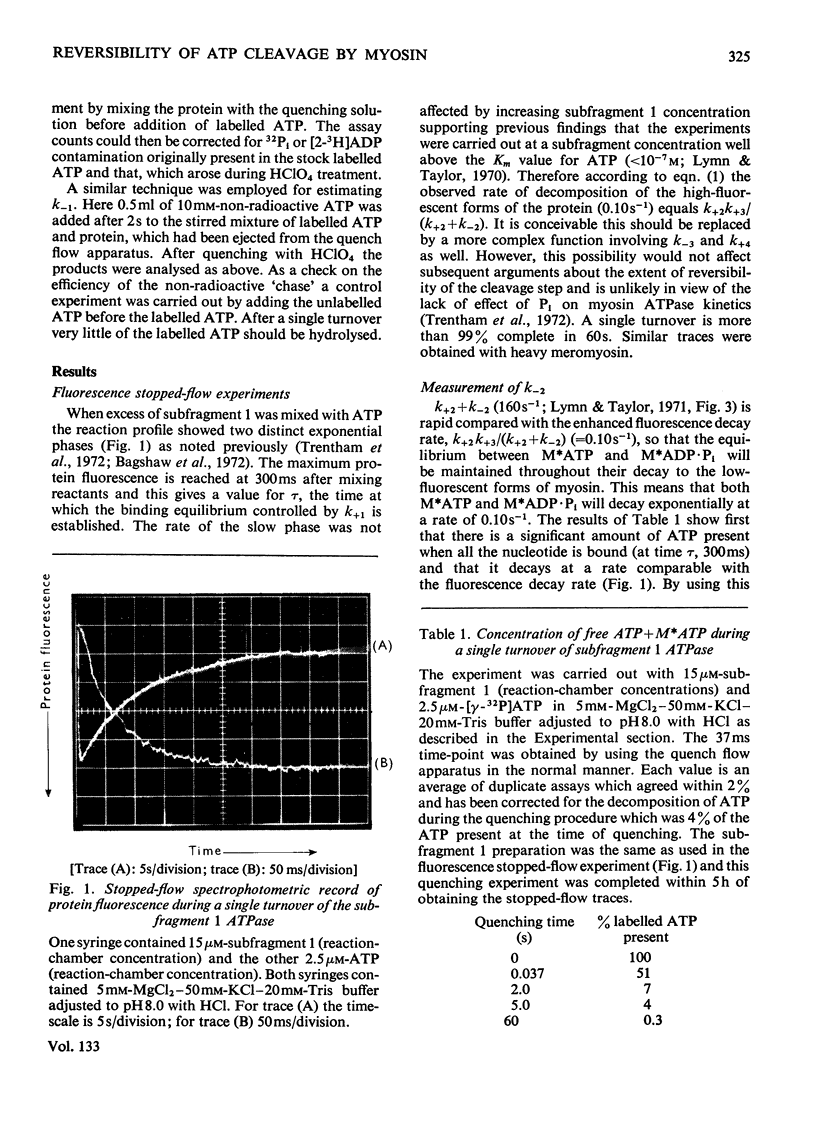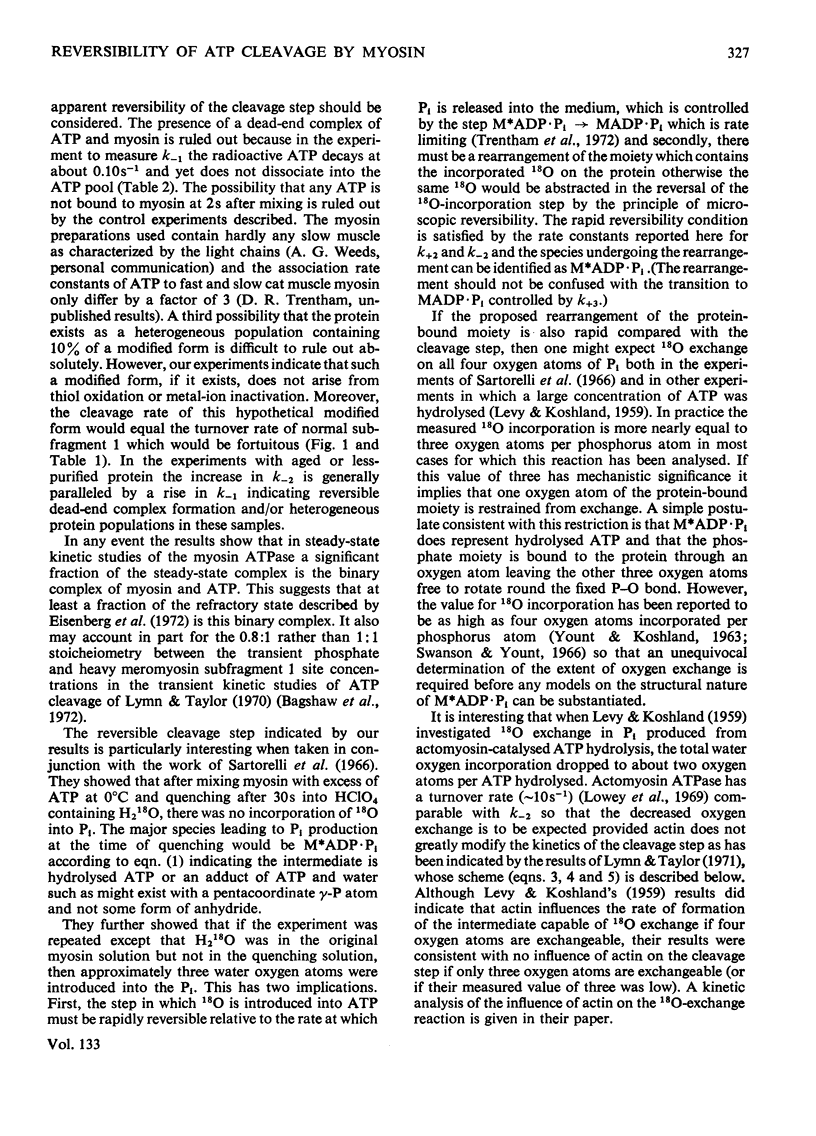Abstract
For the simplest kinetic model the reverse rate constants (k−1 and k−2) associated with ATP binding and cleavage on purified heavy meromyosin and heavy meromyosin subfragment 1 from rabbit skeletal muscle in the presence of 5mm-MgCl2, 50mm-KCl and 20mm-Tris–HCl buffer at pH8.0 and 22°C are: k−1<0.02s−1 and k−1=16s−1. Apparently, higher values of k−1 and k−2 are found with less-purified protein preparations. The values of k−1 and k−2 satisfy conditions required by previous 18O-incorporation studies of H218O into the Pi moiety on ATP hydrolysis and suggest that the cleavage step does involve hydrolysis of ATP or formation of an adduct between ATP and water. The equilibrium constant for the cleavage step at the myosin active site is 9. If the cycle of events during muscle contraction is described by the model proposed by Lymn & Taylor (1971), the fact that there is only a small negative standard free-energy change for the cleavage step is advantageous for efficient chemical to mechanical energy exchange during muscle contraction.
Full text
PDF





Selected References
These references are in PubMed. This may not be the complete list of references from this article.
- Eisenberg E., Dobkin L., Kielley W. W. Heavy meromyosin: evidence for a refractory state unable to bind to actin in the presence of ATP. Proc Natl Acad Sci U S A. 1972 Mar;69(3):667–671. doi: 10.1073/pnas.69.3.667. [DOI] [PMC free article] [PubMed] [Google Scholar]
- Glynn I. M., Chappell J. B. A simple method for the preparation of 32-P-labelled adenosine triphosphate of high specific activity. Biochem J. 1964 Jan;90(1):147–149. doi: 10.1042/bj0900147. [DOI] [PMC free article] [PubMed] [Google Scholar]
- Kushmerick M. J., Davies R. E. The chemical energetics of muscle contraction. II. The chemistry, efficiency and power of maximally working sartorius muscles. Appendix. Free energy and enthalpy of atp hydrolysis in the sarcoplasm. Proc R Soc Lond B Biol Sci. 1969 Dec 23;174(1036):315–353. doi: 10.1098/rspb.1969.0096. [DOI] [PubMed] [Google Scholar]
- LEVY H. M., KOSHLAND D. E., Jr Mechanism of hydrolysis of adenosinetriphosphate by muscle proteins and its relation to muscular contraction. J Biol Chem. 1959 May;234(5):1102–1107. [PubMed] [Google Scholar]
- Lowey S., Slayter H. S., Weeds A. G., Baker H. Substructure of the myosin molecule. I. Subfragments of myosin by enzymic degradation. J Mol Biol. 1969 May 28;42(1):1–29. doi: 10.1016/0022-2836(69)90483-5. [DOI] [PubMed] [Google Scholar]
- Lymn R. W., Taylor E. W. Mechanism of adenosine triphosphate hydrolysis by actomyosin. Biochemistry. 1971 Dec 7;10(25):4617–4624. doi: 10.1021/bi00801a004. [DOI] [PubMed] [Google Scholar]
- Lymn R. W., Taylor E. W. Transient state phosphate production in the hydrolysis of nucleoside triphosphates by myosin. Biochemistry. 1970 Jul 21;9(15):2975–2983. doi: 10.1021/bi00817a007. [DOI] [PubMed] [Google Scholar]
- Sartorelli L., Fromm H. J., Benson R. W., Boyer P. D. Direct and 18-O-exchange measurements relevant to possible activated or phosphorylated states of myosin. Biochemistry. 1966 Sep;5(9):2877–2884. doi: 10.1021/bi00873a015. [DOI] [PubMed] [Google Scholar]
- Trentham D. R., Bardsley R. G., Eccleston J. F., Weeds A. G. Elementary processes of the magnesium ion-dependent adenosine triphosphatase activity of heavy meromyosin. A transient kinetic approach to the study of kinases and adenosine triphosphatases and a colorimetric inorganic phosphate assay in situ. Biochem J. 1972 Feb;126(3):635–644. doi: 10.1042/bj1260635. [DOI] [PMC free article] [PubMed] [Google Scholar]
- Wilkie D. Thermodynamics and biology. Chem Br. 1970 Nov;6(11):472–476. [PubMed] [Google Scholar]
- YOUNG D. M., HIMMELFARB S., HARRINGTON W. F. ON THE STRUCTURAL ASSEMBLY OF THE POLYPEPTIDE CHAINS OF HEAVY MEROMYOSIN. J Biol Chem. 1965 Jun;240:2428–2436. [PubMed] [Google Scholar]
- YOUNT R. G., KOSHLAND D. E., Jr Properties of the O18 exchange reaction catalyzed by heavy meromyosin. J Biol Chem. 1963 May;238:1708–1713. [PubMed] [Google Scholar]


